Mink Profile
One of the most successful mammals in the UK is, unfortunately, an invasive species.
While native riverine species across the European continent struggle with lack of space and food, this American visitor is here to stay, and is thriving.
The two species of mink are polar opposites in terms of conservation, though you’d never know it to look at them.
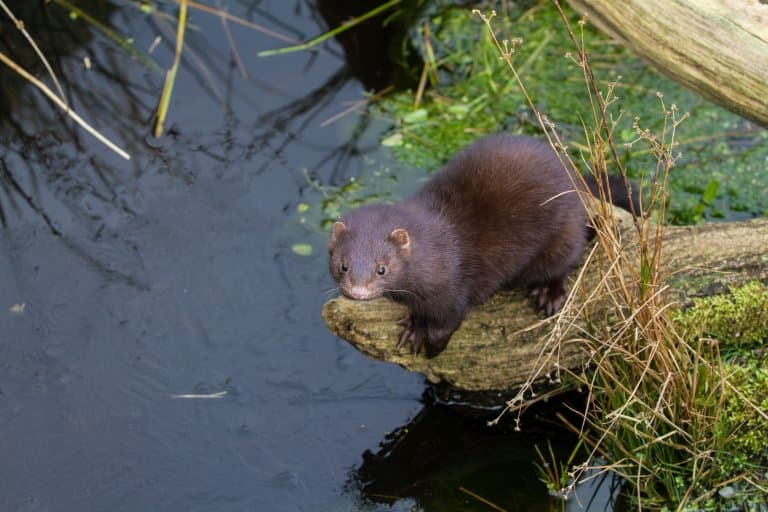
Mink Facts Overview
| Habitat: | River banks, lakes and coastal inlets |
| Location: | North America and Europe |
| Lifespan: | 12 years |
| Size: | 70cm (29 inches) long |
| Weight: | 1kg to 1.6kg (2lb to 3.5lb) |
| Color: | Dark brown |
| Diet: | Fish, crustaceans, small mammals, birds, eggs, frogs |
| Predators: | Canids, cats, |
| Top Speed: | About 6.5km/h (4mph) |
| No. of Species: |
2 |
| Conservation Status: |
M. lutreola is critically endangered, N. vison least concern |
Mink are two species of small, rodent-like aquatic mammals in the badger family, and though they’re hard to tell apart, they’re from quite different backgrounds.
American mink have provided Europe with fur for over a century, and in return, they’ve pillaged the remaining continental habitats of their European cousins.
The story of Mink is a long and tragic one on both sides and is likely to have to get worse before it gets better.
But these are smart and adaptable animals, and with a little help, they could break through.
Interesting Mink Facts
1. Despite being two totally different animals, they’re remarkably similar
There are two species known as mink, that are only slightly related. They’re both mustelids, like badgers and otters, but other than that, they took different paths.
Still, they’re almost impossible to tell apart with any reliability just from looking at them.
It should go without saying that the American species, Neogale vison, is the heavier animal, but this isn’t a reliable factor.
Far more reliable is the lack of a white patch on the face, which would tell you it’s an American mink, as all European mink, Mustela lutreola, present with this marking. But if you see a white mark, it could still be N. vison, as some of the American mink have them too!
It would be a lot easier to tell them apart if they’d stayed on their own continents, but there’s been a bit of a mix-up in recent years.
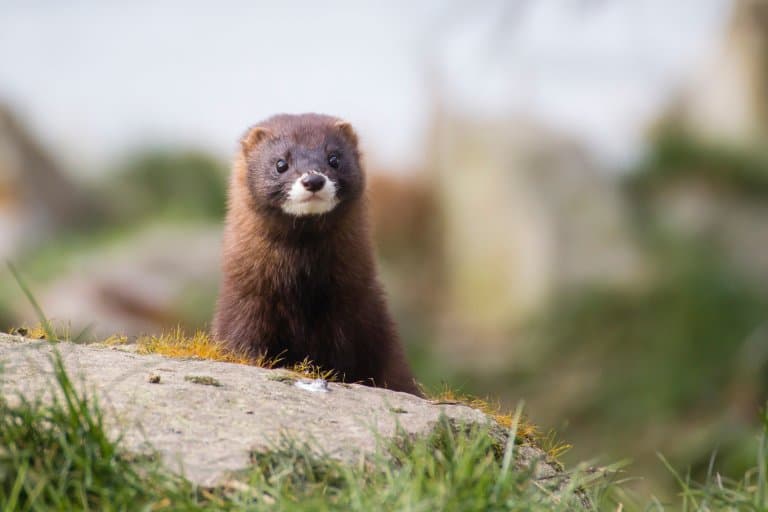
2. Stinky mink
These animals produce a substance called mustelan, which is named after the genus Mustela, to which both species once belonged before the American mink was differentiated as a closer relative of the American weasels.
Much like a skunk, mink can shoot out some of this very unsavoury liquid from anal glands at the base of their tail. They may not have the aim of a skunk, but they do reportedly have the potency.
They didn’t make our smelliest animals in the world list, but they were close!1
3. They’re good on any terrain
Both species are considered semiaquatic, and spend a lot of their time in the water. Their streamlined bodies and thick, waterproof fur allow them to stay comfortable during and after diving down to a depth of up to three meters.
They exhibit some form of diving reflex, in which the heart slows down to conserve oxygen, and they have remarkable cardio in the water. Mink can even climb trees!
They’re also formidable and adaptable hunters and can kill birds much larger than themselves.
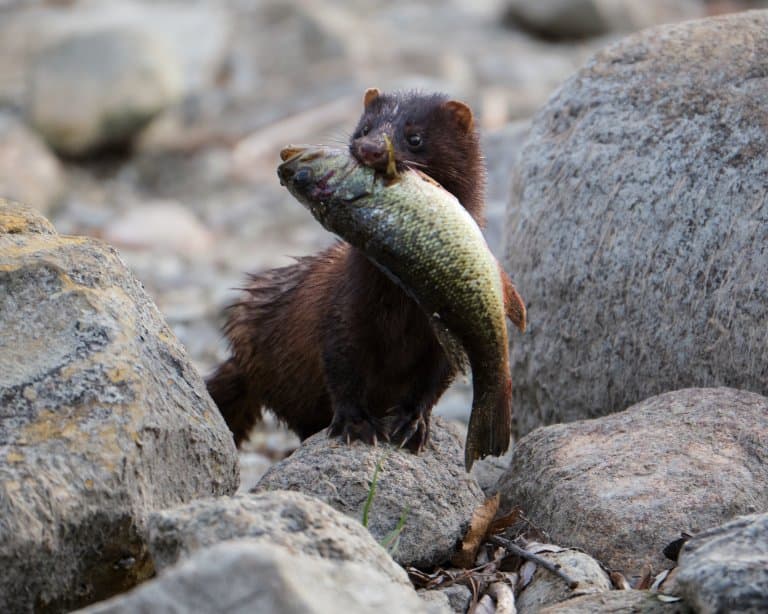
4. They’re traditionally kept for their fur
This incredible fur has led to unspeakable torture for many members of the species who have been farmed for it.
Mink farmers have bred a captive race of the American mink, on account of its fur being denser than that of the European equivalent, and slowly they’ve become different animals.
Their brains and heads are about 20% smaller but this doesn’t stop them from being crafty enough to get out and set up colonies of their own. 2
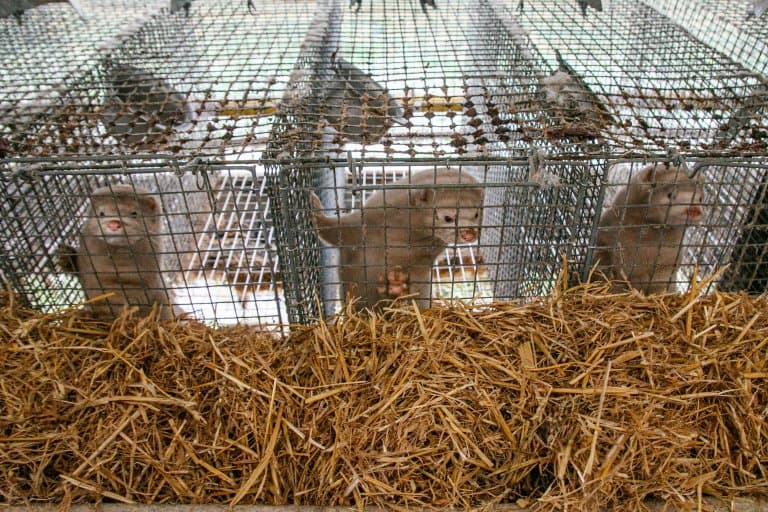
5. They’re escapees
All over Europe, the American mink is doing just fine. These adaptable animals were not from around these parts, but after escaping from innumerable mink farms set up in the ‘20s, they’ve settled right in, and often at the detriment of local native species.
In the UK, in the ‘90s 6,000 mink were released from a fur farm by animal rights activists after frustrations that the government was doing nothing to keep its promises regarding animal welfare.
The farm itself was being investigated for cruelty when the activists cut the fence.
A spokesperson for the activist organisation dismissed concerns, saying: “they’re not going to wipe out entire species”
The escaped mink immediately set to work wiping out the entire species of British mammals. They quickly did a number on the water vole, pushing it almost to extinction. Mink are small enough to invade their burrows and can also hunt the voles directly.
Luckily, European mink had never made it to the Isles, but the American escapees did make it to the mainland from various farms over the continent and have since outcompeted the European species to critically endangered.
Combined with habitat loss and other environmental changes, the European mink is desperately struggling. 3
6. Now they’re persecuted as invaders
The poor American mink can’t catch a break in Europe. They were shipped as slaves, farmed for their fur, escaped to form independent colonies, and now they’re invasive and need to be killed.
They’re more aggressive and generally larger than their Euro cousins, and do a good job of filling all the niches.
American Minks entering the last refuges of the European mink in Spain are being trapped and killed to protect some of the few remaining native minks on the continent.
And if the threat of habitat destruction, invasive competitors and environmental damage wasn’t enough for the European mink, now they have a pandemic to worry about. 4
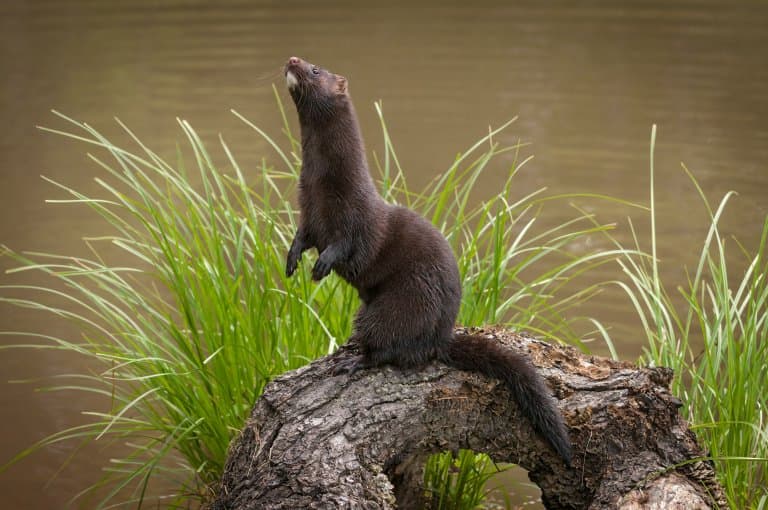
7. They can catch covid
Much like the consumption of animal flesh, the wearing of animal fur is a popular recreational activity among people of wealthy nations. But unlike flesh, fur is expensive, so it’s exclusive to a smaller group who are more readily lambasted by the majority of people who can’t afford to partake.
Still, this mass grumbling hasn’t been enough to put a stop to the industry, and mink fur farms are still in full swing across the Northern Hemisphere. However, new arguments against the practice have recently emerged as a result of the pandemic.
Mink are one of the handful of animals that can catch, suffer from, and pass on COVID-19. This is a threat to mink, mink farms, and humanity, as the grim, cramped conditions of the farms provide a perfect reservoir for new variants to grow and current ones to spread from.
But more than this, it threatens captive species in zoos like Tallinn, where there’s a breeding facility for European mink. Should covid get into a place like this, the entire gene pool could be threatened. 5
8. Sea mink are extinct
A recently extinct species of mink called the sea mink (Neogale macrodon) inhabited the New England seaboard and the eastern coast of North America around the Gulf of Maine.
Due to its large size, the sea mink was heavily hunted for its fur by the largely unregulated fur industry of the time.
Sadly, this led to its extinction sometime between 1860 – 1920, a fate we hope the doesn’t become of the remaining two species.
Mink Fact-File Summary
Scientific Classification
| Kingdom: | Animalia |
| Phylum: | Chordata |
| Class: | Mammalia |
| Order: | Carnivora |
| Family: | Mustelidae |
| Subfamily: | Mustelinae |
| Genera: | Neogale and Mustela |
| Species: | Neogale vison Mustela lutreola |
Fact Sources & References
- Edward K. Boggess (1994), “MINK“, Digital Commons.
- Dieter Kruska (1996), “The effect of domestication on brain size and composition in the mink (Mustela vison)“, Research Gate.
- “An Invasive Mammal – American Mink“, My Learning.
- Kata Karath (2017), “Scientists think they can save the European mink—by killing its ruthless rivals“, American Association for the Advancement of Science.
- “Down but not out: how the European mink found refuge on an Estonian island“, The Guardian.
